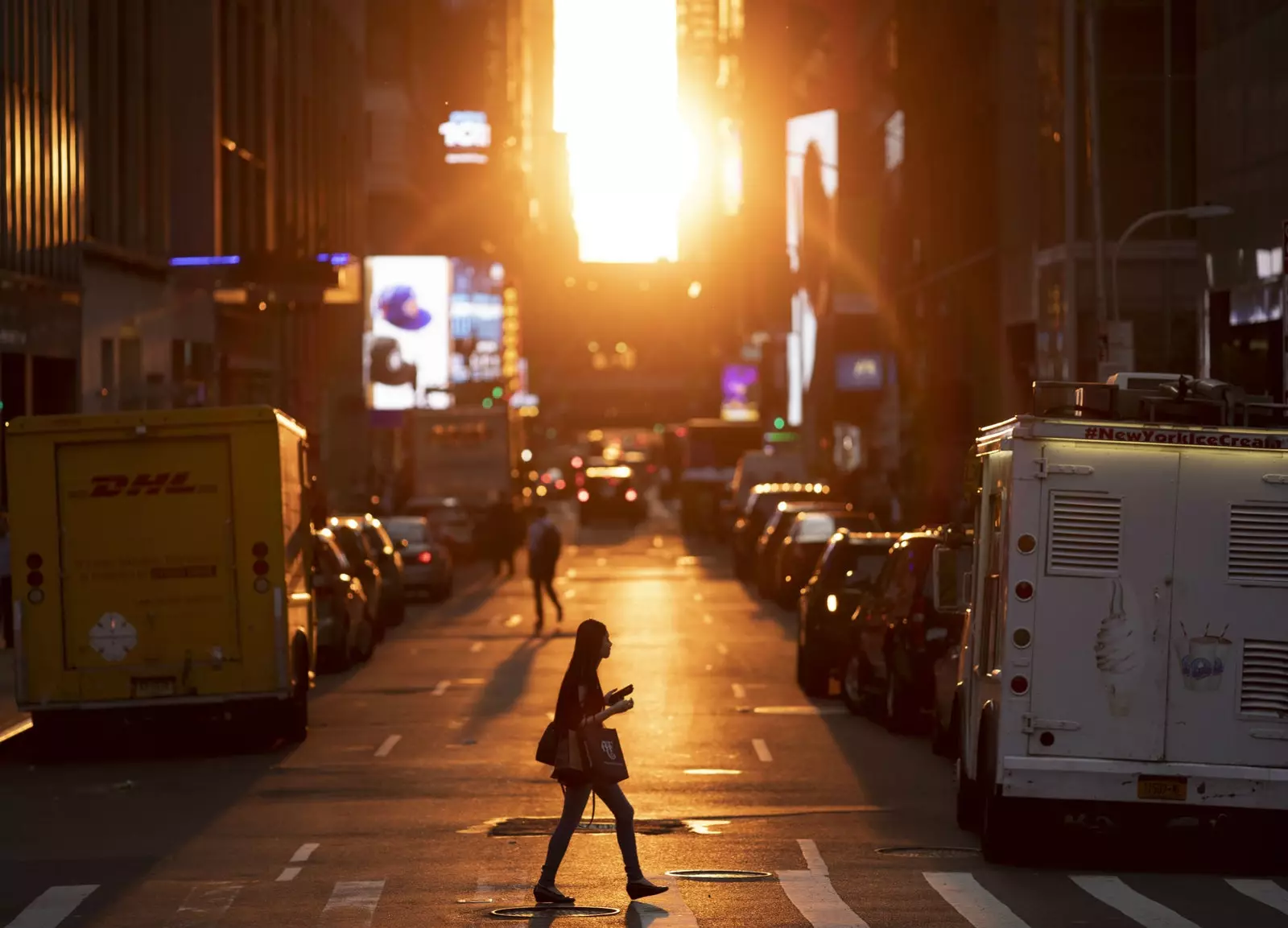
Are you looking for the Manhattanhenge? Perhaps he will find you walking the streets of New York.
If you are traveling these days in New York, it will not be difficult for you to locate the strategic points from which to enjoy the so-called Manhattanhenge.
Because this phenomenon (which is **during sunset, the sun is aligned with the streets of Manhattan in an east-west direction) ** generated such a media buzz in 2018 that, even though it only happens twice a year, there are such a number of people stopped in the middle of the city with their mobile phones raised photographing or recording the sunset that more than a solemn farewell it seems like a flashmob from a Hollywood movie.
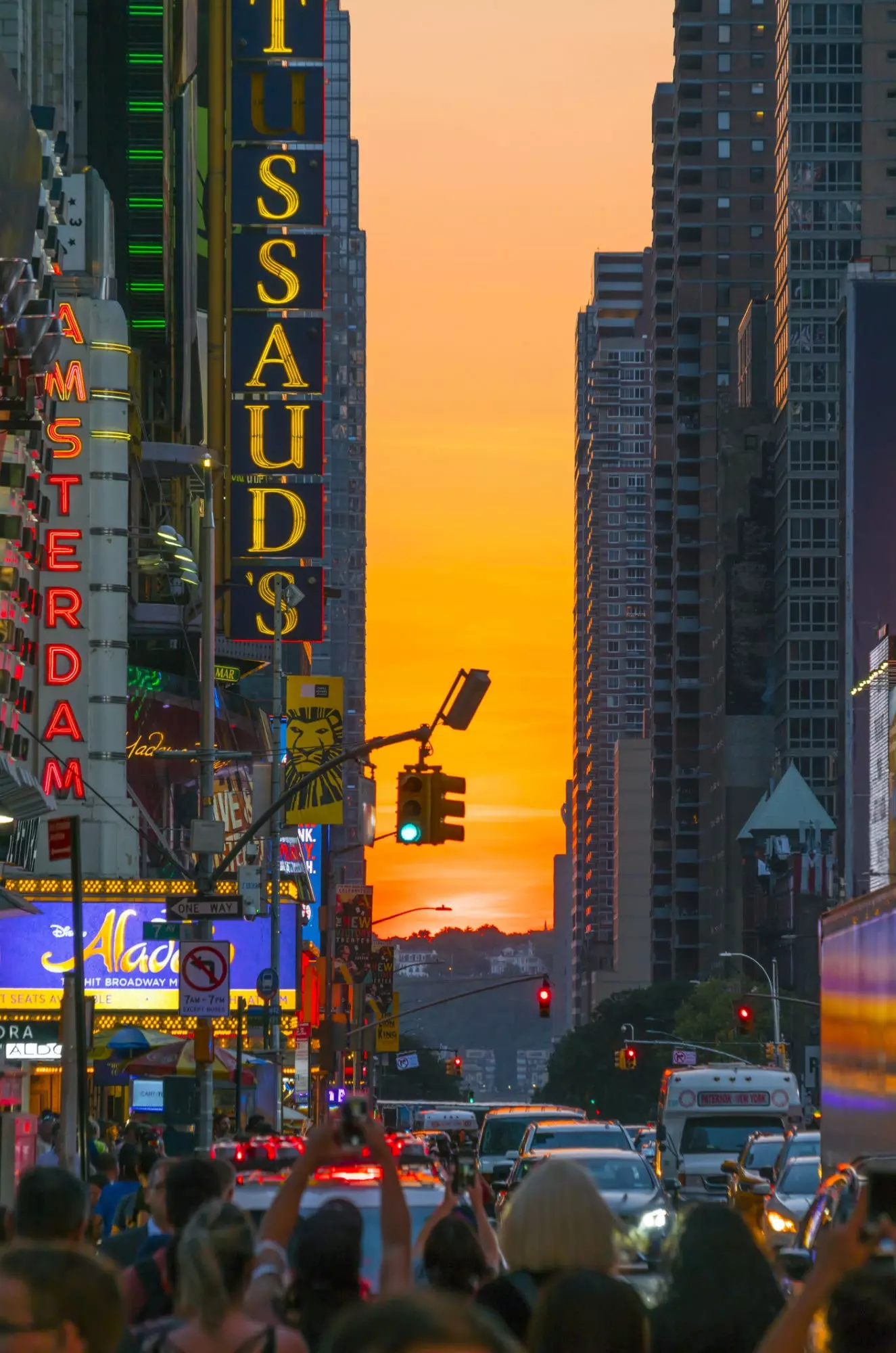
It's not a flash mob, it's people saying goodbye to the sun in Manhattan.
WHAT DOES IT CONSIST OF?
Neil deGrasse Tysonm, the astrophysicist who popularized the term in 2002, explains on the website of the American Museum of Natural History where he works that, despite what pop culture tells us, the sun rises in the east and sets in the west only twice a year: on the equinoxes (the first day of spring and autumn) .
Then it rises and sets in other places on the horizon due to the tilt of the Earth's axis of rotation and the translational movement of the Earth around the sun.
“Thus, if the Manhattan grid had been perfectly aligned with the north-south geographic line, then the days of Manhattanhenge would coincide with the equinoxes. But Manhattan's street grid is rotated 30 degrees east from the geographical north, changing the days of alignment to other dates on the calendar”, continues the scientist and disseminator.
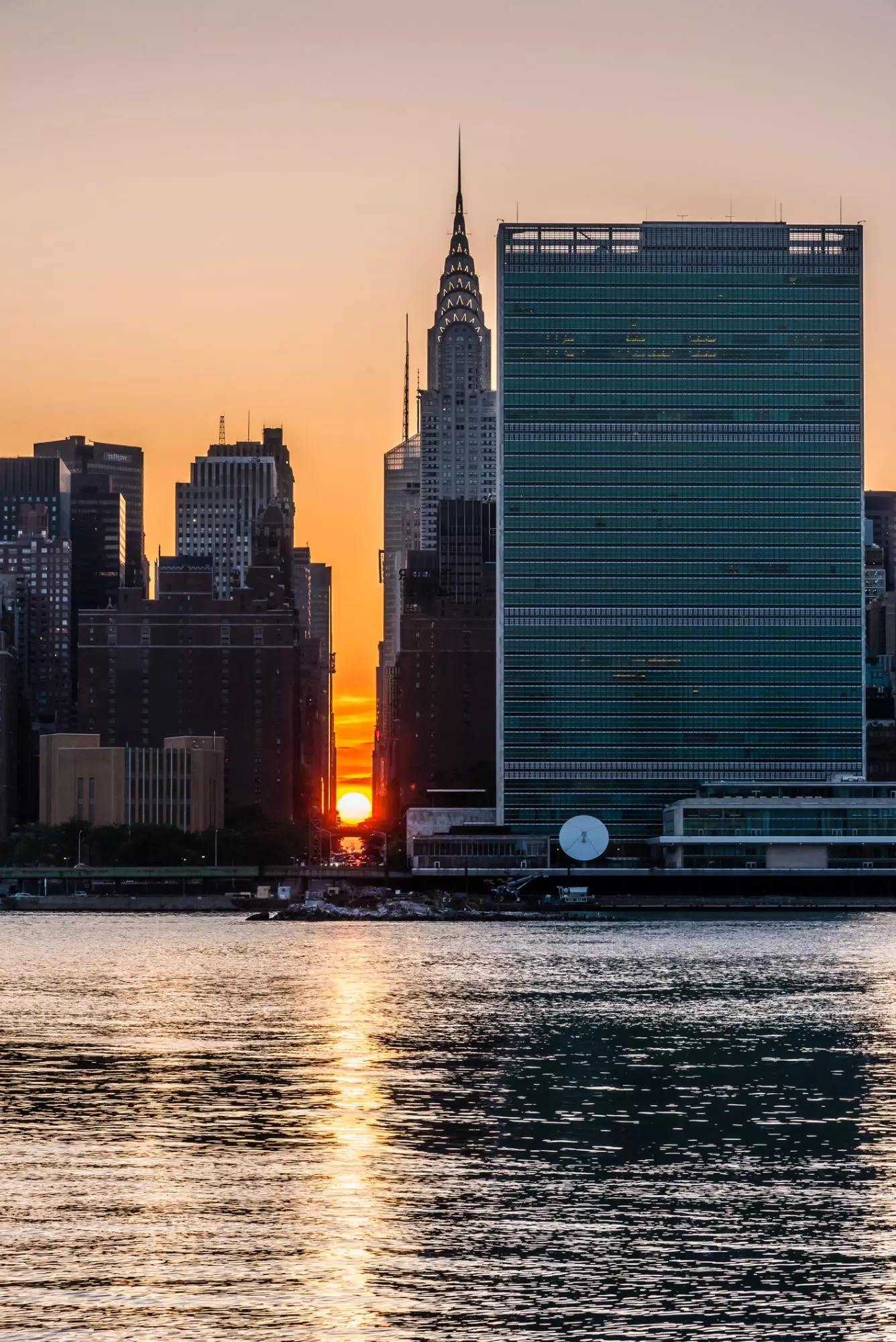
The further east you go, the more spectacular the panorama will be.
The grid that Neil deGrasse Tyson refers to is the urban layout developed in Manhattan thanks to the Commissioners Plan of 1811 and which gave rise to the 11 main avenues and the 155 streets that cross the city.
For this reason, according to the astrophysicist, the best places to go hunting for Manhattanhenge are streets 14, 23, 34, 42, 57, and other adjacent ones. The visual effects on the Empire State at 34 and the Chrysler building at 42 are especially surprising. He also recommends staying as far east as possible, but still overlooking New Jersey when looking west across the parkways.
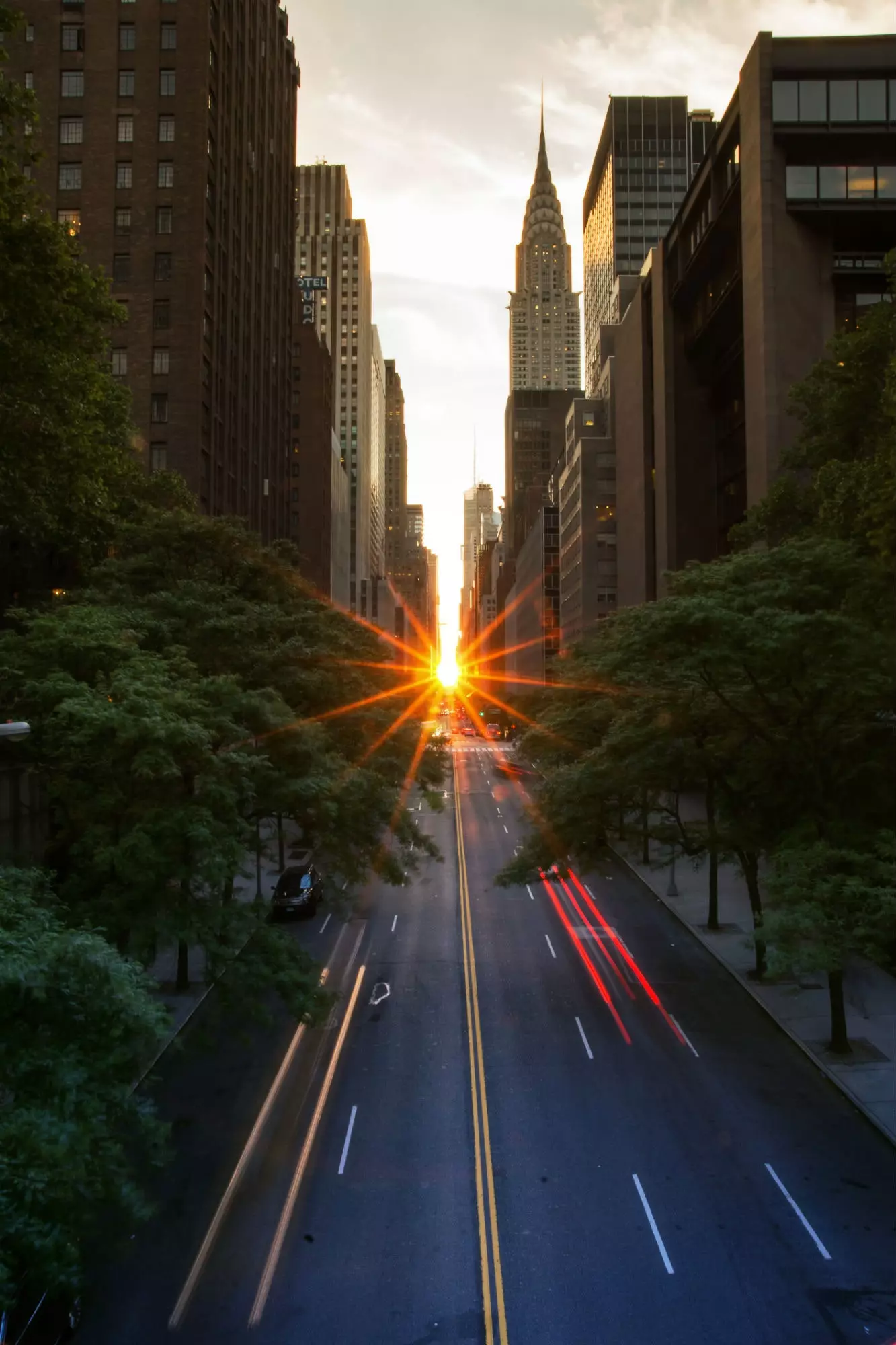
The stamp of the 42 is one of the most popular due to the presence of the Chrysler building.
WHEN WILL IT HAPPEN IN 2019?
Neil deGrasse Tyson shares the dates and times when the Manhattanhenge will take place: May 29 (8:13 pm) and 30 (8:12 pm) and, for the second time, on July 12 (8:20 pm) and 13 (8:21).
On May 29 and July 13, only the upper part of the solar disk will be visible, the other half will be hidden below the horizon (Half Sun on the Grid), and on May 30 and July 12 the disc will be seen in full (Full Sun on the Grid).
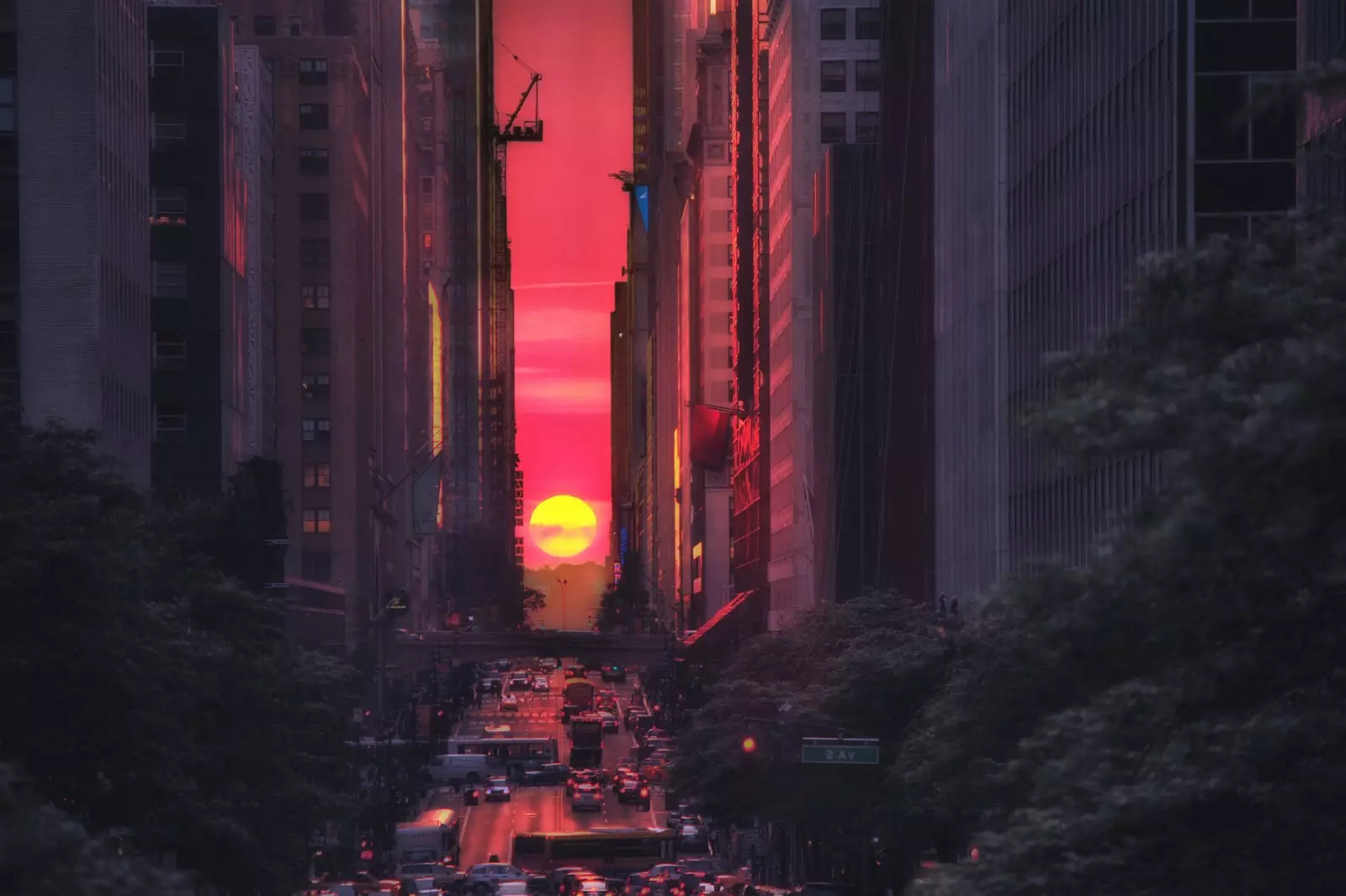
The entire solar disk or the so-called Full Sun on the Grid.
WHERE DOES THE NEOLOGISM COME FROM?
As you may have already imagined, it derives from merging the name of the New York district with that of the English ruins of Stonehenge, where the sun aligns with the stones at the solstices.
A fact with which Neil deGrasse Tyson ironically asks himself what will future civilizations think when they study the design of the island of Manhattan and stumble upon the fact that twice a year, during Manhattanhenge, people stopped to worship the sunset coinciding with Memorial Day and the rest of the baseball stars. They could conclude, anticipates the Hayden Planetarium astrophysicist, that in the 21st century Americans loved war and this mass sport.
So if you do not want to be a participant in these future social archeology studies, you can always visit the city during the New York Winter Solstices (around December 5 and January 8) in order to see the sun appear through the streets from the opposite side, that is, from the east.
*Report originally published on May 29 and updated on July 12 with the second Manhattanhenge phenomenon of the year.
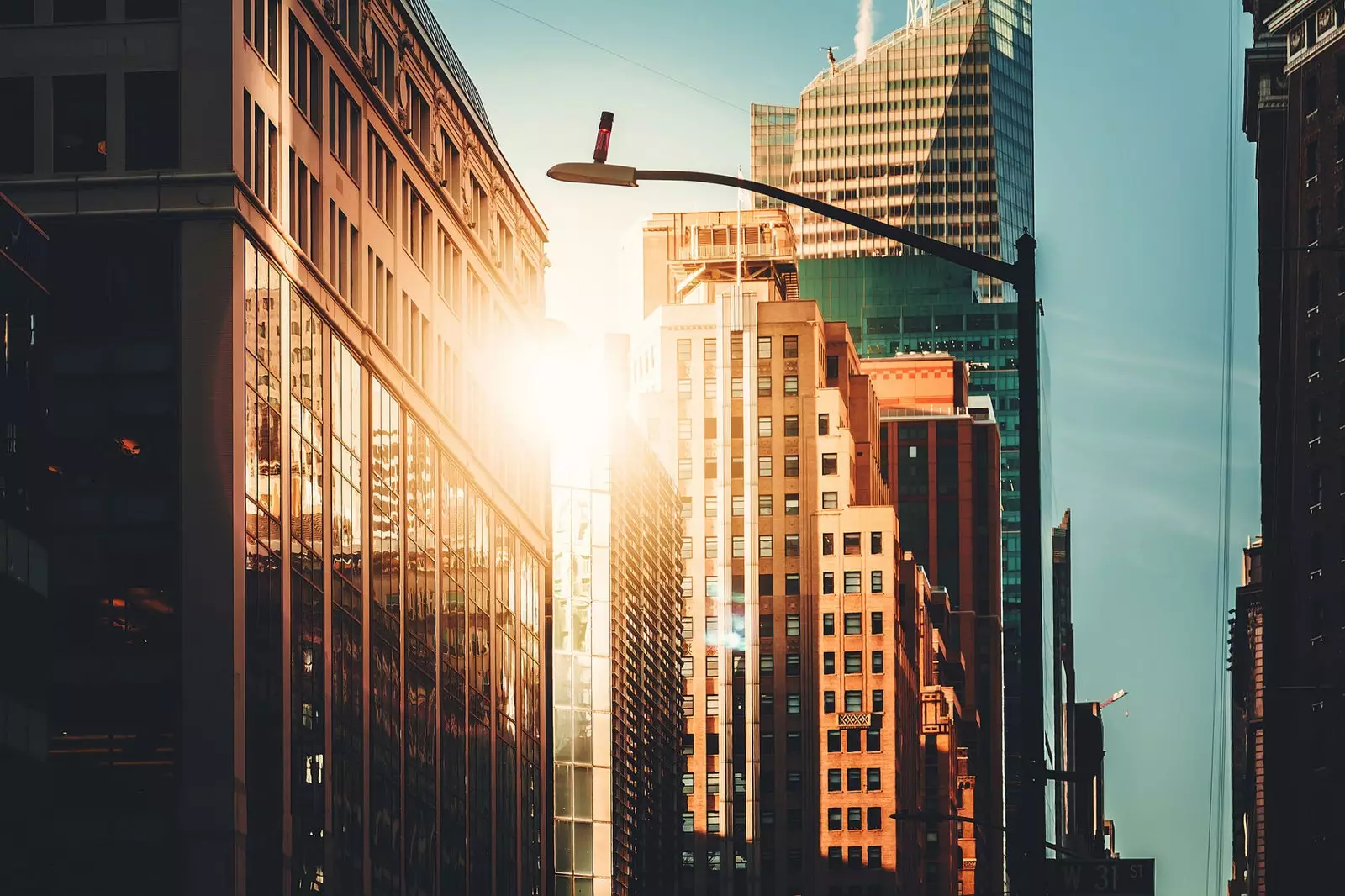
You can surrender to Manhattanhenge or choose to watch the sunrise during New York's winter solstices.
